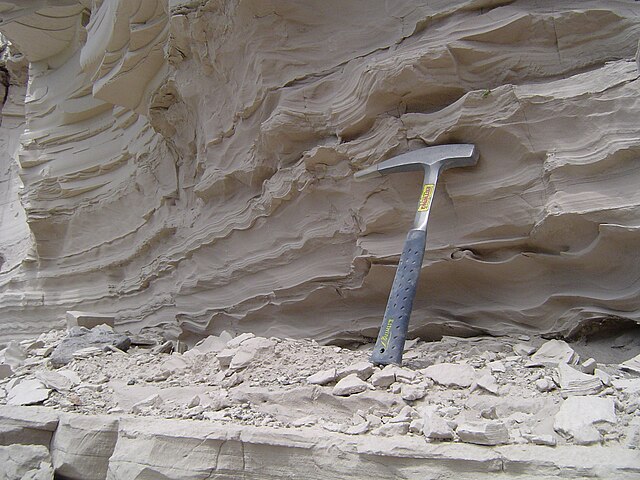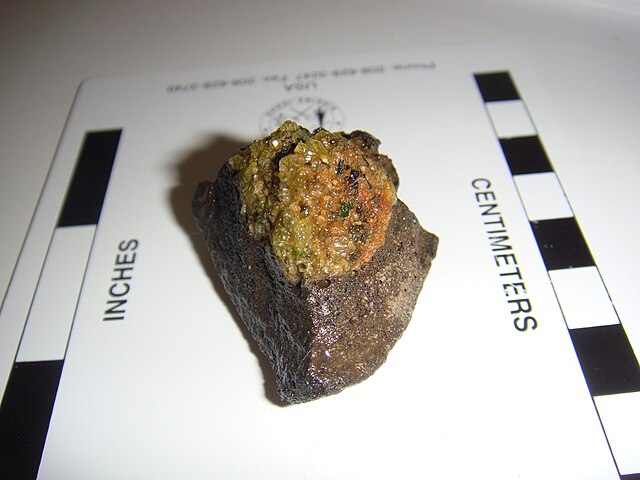The lithology of a rock unit is a description of its physical characteristics visible at outcrop, in hand or core samples, or with low magnification microscopy. Physical characteristics include colour, texture, grain size, and composition. Lithology may refer to either a detailed description of these characteristics, or a summary of the gross physical character of a rock. Examples of lithologies in the second sense include sandstone, slate, basalt, or limestone.
Stratigraphy as seen in southeastern Utah
A basalt, showing the 'pillow' lava shape characteristic of underwater eruptions, Italy
A claystone, the finest-grained sedimentary rock, deposited in Glacial Lake Missoula, Montana
An ultramafic mantle xenolith with olivine and pyroxene (altering brown to iddingsite) in a matrix of mafic basalt scoria
Lithostratigraphy is a sub-discipline of stratigraphy, the geological science associated with the study of strata or rock layers. Major focuses include geochronology, comparative geology, and petrology.
The Permian through Jurassic lithostratigraphy of the Colorado Plateau area of southeastern Utah that makes up much of the famous prominent rock formations in protected areas such as Capitol Reef National Park and Canyonlands National Park. From top to bottom: Rounded tan domes of the Navajo Sandstone, layered red Kayenta Formation, cliff-forming, vertically jointed, red Wingate Sandstone, slope-forming, purplish Chinle Formation, layered, lighter-red
Strata in Salta (Argentina)
Diagrams showing stratigraphic relations: A: an angular unconformity; B: a disconformity; C: a nonconformity.
Disconformity with the Lower Cretaceous Edwards Formation overlying a Lower Permian limestone; hiatus is about 165 million years; Texas.







